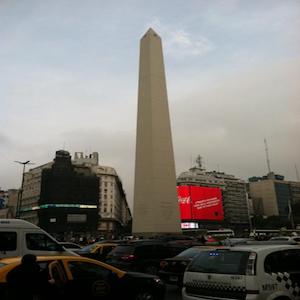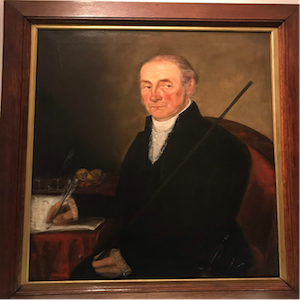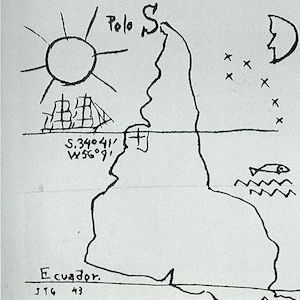South America

Tomb of General Juan Lavalle
Argentina declared independence from Spain in 1816 and eventually achieved it after several years of fighting royalist forces. Juan Lavalle was born in Buenos Aires in 1797, and remained in Argentina for most of his life.

The Obelisk of Buenos Aires
Built 1936 to commemorate the anniversary of the founding of the city, the Obelisk stands in downtown Buenos Aires, Argentina. It stands 67.5 meters tall, made of concrete and stone. The nation of Argentina celebrates its independence day on July 9th.

Remains of the Puerta de la Ciudadela
The city of Montevideo, Uruguay, once belonged to the Viceroyalty of the Rio de la Plata, under the control of the Spanish Crown. It was officially founded in 1724. Around this time, the government constructed a wall around the city.

Portrait of Manuel Mansilla
This painting depicts Manuel Mansilla, the Alguacil Mayor (sheriff) of the city of Buenos Aires. He held this position from 1795-1821, during a key transitional moment. When he began his tenure, the city belonged to the Viceroyalty of the Rio de la Plata, under Spanish rule.

Mausoleum of José de San Martín
In 1816, after more than two centuries of Spanish rule, the nation of Argentina declared its independence. One of the leaders of the independence movement was José Francisco de San Martín y Matorras, more commonly known as General San Martín. He fought in battles in Argentina, Peru, and Chile.

Legislative Palace of Uruguay
The Legislative Palace of Montevideo, Uruguay, was built in the early twentieth century. Construction lasted from 1904 to 1925 under the supervision of Vittorio Meano and Gaetano Moretti. It is located in the Aguada barrio, or neighborhood, of the city.

Cast of the Hand of Brazilian Emperor Pedro II
Brazilian Emperor Pedro II ruled from 1831 – 1889. He was the last emperor in power before Brazil became a republic. This image captures two bronze hand molds taken of Pedro II’s right hand in the early nineteenth century.
Ark (Wooden Chest with Iron Locks)
This heavy wooden chest served a crucial purpose for municipal officials of Buenos Aires in the eighteenth century: it stored their documents. Until the early nineteenth century, the Spanish Crown ruled over much of South America, including Buenos Aires.

Fourteenth-Century Chinese Dragon
This Chinese animal figure belongs to the rich collections of the Museo Nacional de Arte Decorativo in Buenos Aires. Depicting a dragon, the piece dates back to the fourteenth century.

America Invertida (Inverted America)
We generally expect maps to convey the location of oceans and land masses accurately. But why do almost all maps and globes position North at the top and South at the bottom, when there is no up or down orientation of the universe?